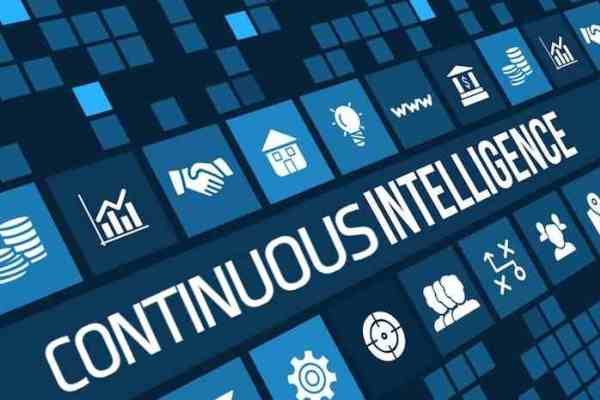Oyster Bay, USA: Continuous Intelligence (CI) technologies will see a greater adoption in 2020. It will elevate IoT data analytics, way beyond traditional operational levels. And will have a greater impact on strategic planning and organizational change, states ABI Research.
In ABI Research’s new whitepaper – 54 Technology Trends to Watch in 2020, analysts have identified 35 trends that will shape the technology market and 19 others that, although attracting huge amounts of speculation and commentary, look less likely to move the needle over the next 12 months.
“After a tumultuous 2019 that was beset by many challenges, both integral to technology markets and derived from global market dynamics, 2020 looks set to be equally challenging,” says Stuart Carlaw, Chief Research Officer – ABI Research.
What will happen in 2020:
Continuous Intelligence:
“The Continuous Intelligence (CI) concept will be consolidating in the IoT analytics market, enabling more advanced analytics in near-real time,” says Kateryna Dubrova, M2M, IoT & IoE Analyst – ABI Research.
Since the emergence and expansion of streaming analytics and streaming technologies, the ability to continuously analyze and extract value from the IoT data is growing.
The CI application will be possible because the cloud vendors and vendors are offering E2E platforms, expanding their capabilities through digital twinning, big data technologies, and ML algorithms.
“Hence, ABI Research predicts greater CI technologies adoption in 2020, which will elevate IoT data analytics beyond traditional operational level (maintenance and control), but we will also observe a greater impact on strategic planning and organizational change,” adds Dubrova.
mMTC will sustain only a handful of chipset manufacturers:
mMTC (Massive Machine-type Communication) begun under 4G, with LTE-M and Narrowband-IoT (NB-IoT) being “forward-compatible” with the forthcoming 5G New Radio (NR) standard. For the Chipset vendors, it was greenfield opportunity to go from zero to hero with massive IoT, with some being established from scratch for the sake of developing a single NB-IoT baseband chip.
“This resulting race saw 17 baseband vendors emerge, but only four different ones currently supply most of the hundreds of LTE-M and NB-IoT products now available. HiSilicon, MediaTek, Qualcomm, and RDA (UNISOC) dominate,” says says Jamie Moss, M2M, IoT & IoE Research Director – ABI Research.
“And this situation will only compound as we move toward Release 16 and the full coexistence of LTE-M and NB-IoT with 5G NR, i.e., the “official” start of the mMTC market,” explains Jamie.
“Nothing succeeds like success and only those with strong early adoption, regardless of slow initial sales, will be there to enjoy the boom years to come,” adds Moss further.
China will drive the sharing economy 2.0:
Uber and Airbnb could be considered the Sharing Economy 1.0. “But China is showing the world what the next phase of the sharing economy will look like: shared powerbanks,” says Dan Shey, VP – Enabling Platforms, ABI Research.
Shared powerbanks have been a major driver of cellular connections in China today. “The newer applications in the more “connected” version of the sharing economy will continue to grow across the world, albeit at a more measured pace than seen in China.”
What won’t happen in 2020:
The IoT platform market will not consolidate:
“For many years, there have been predictions that the IoT platform supplier market will begin to consolidate, and it just won’t happen,” says Dan Shey, VP – Enabling Platforms, ABI Research.
“There are more than 100 companies that offer device-to-cloud IoT platform services and for every one that is acquired, there are always new ones that come to market,” Shey reasons why platform market will not consolidation.
Unlicensed proprietary LPWA will not merge with licensed open standards:
“The two cannot be reconciled at the standards level because the cellular commands stems from the cost of its license, and the owners have control over their blocks of spectrum, providing a secure, managed, quality of service-based guarantee to IoT customers,” says Adarsh Krishnan, M2M, IoT & IoE Principal Analyst – ABI Research.
Edge Will Not Overtake Cloud:
“The edge technology’s accelerated growth and intelligent device paradigm have created one of the largest industry misconceptions: edge technology will cannibalize cloud technology,” says M2M, IoT & IoE Analyst Kateryna Dubrova.
“In fact, we will see a rapid development of edge-cloud-fog continuum in future, where technology will complement each other and not cross-cannibalize,” adds Dubrova.

